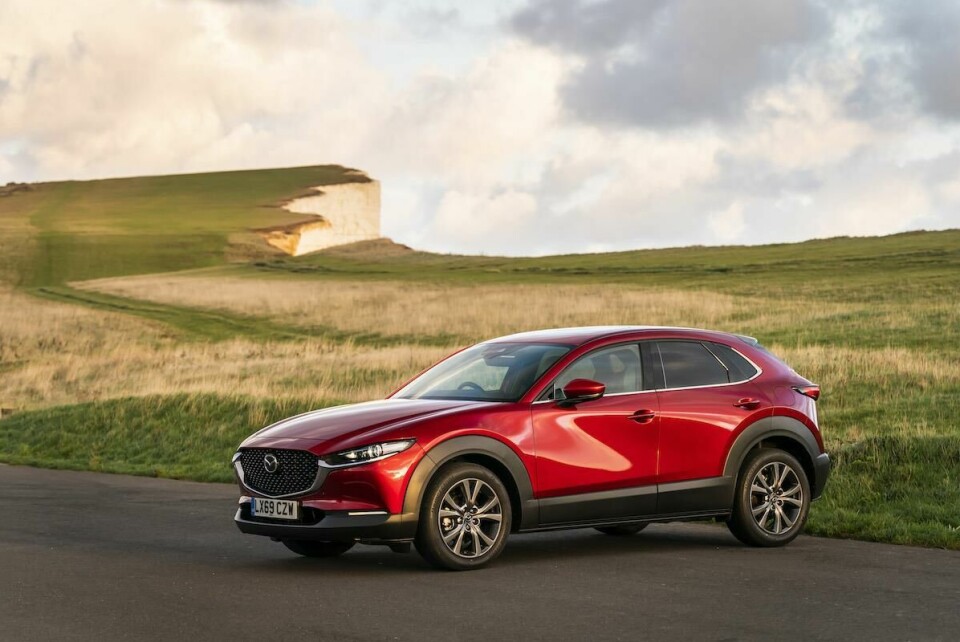
Driven: Mazda CX-30
The Mazda CX-30 marks a subtle, but confident evolution of the brand’s Kodo design principles, says Michael Nash
When Car Design News spoke to Ikuo Maeda, Mazda’s global design lead, the direction of intent for the company’s future models was clear. He outlined the key aspects of the ‘Kodo – soul of motion’ design language, stating that this would evolve to ”a more elegant and premium look, while retaining the sense of vitality for which this design philosophy is known.”
A year on, and that evolution has started to take shape. In the new CX-30, for example, design details are subtle but executed with a distinct confidence.
Exterior
As it shares a platform, design language, and was launched around the same time, it’s no surprise that the CX-30 looks visually similar to the Mazda 3, which we tested at the start of 2020. The curvy body work and soft lines match those of the sedan, and the front end is particularly close with the same large heptagonal grille joined at either side by slitted headlamps.
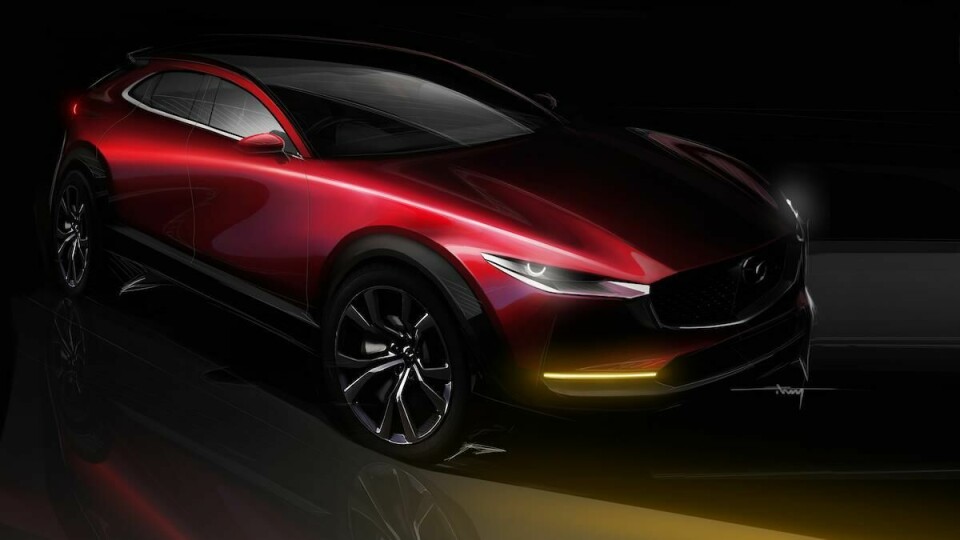
At a first glance, both models have little going on down the side, with no sharp creases to draw the eye. This is a purposeful decision made by the design team at Mazda in order to provide a large single surface area that captures light and manipulates it through the curve of the panel. It gives an impressive effect on a sunny day when parked under a leafy tree, allowing shadows to flicker playfully.
The rear of the CX-30, however, is very different to the 3. As the SUV is shorter in length and taller, the back is hunched and layered. A matt black bumper sits above the two exhausts, riding up to almost meet with the boot, save for a small strip of body. The top of the lights are horizontal and straight, located in line with the bottom of the side and rear windows to create a seamless link around the car.
The most unusual feature of the exterior design is at the rear – the half-moon indentation spanning its entire width. The bottom, straight line cuts across the numberplate and underlines the ‘CX-30’ and ’Skyactiv-X’ badges, while the crescent peaks to meet the Mazda logo. As with the body work on the side of the SUV, this half-moon shape can create beautiful patterns when reacting with light.
Interior
Instead of giving all the space to a host of large screens, Mazda has drawn on the Japanese concept of ‘Yohaku’ for the design of the interior. To put it simply, the concept refers to empty space, and is often used in art. Therefore, no unessential trimmings are included in the CX-30, and those that are present retain a simplistic character.
The small 8.8-inch screen sinks into a slot on the upper section of the dash. Its shape makes it look as if it’s leaning towards the steering wheel and close to the drivers’ line of sight. The rest of the dash sweeps across to fall into the door panels, enveloping the occupants. Two air vents outlined with chrome flank the steering wheel to emphasise the cockpit feel.
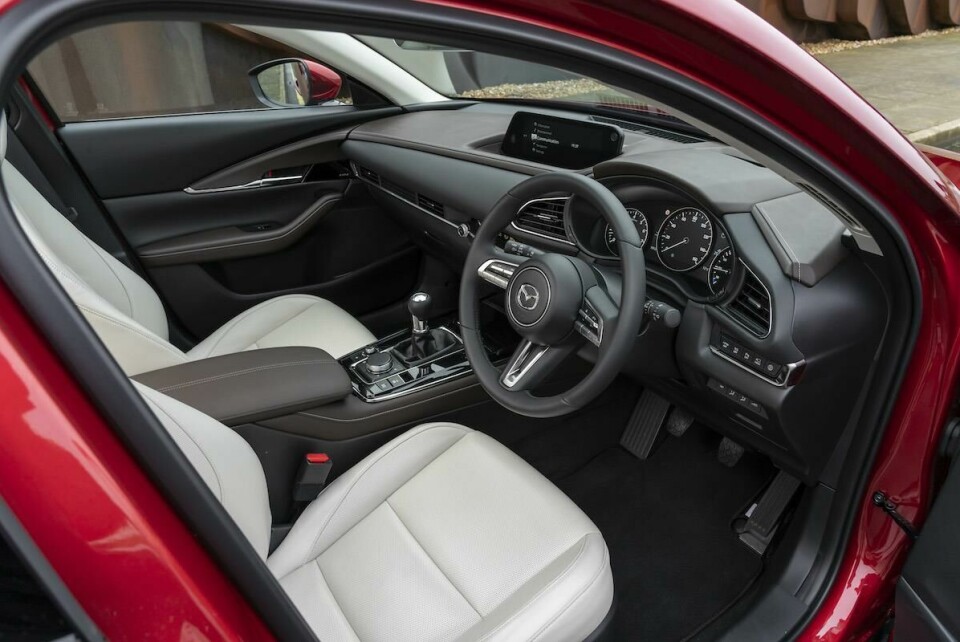
The materials are soft to touch and of high quality. Small details such as the stitching on the upper dash and through the middle of the central arm rest add to the luxury aesthetic without being overpowering.
Room is a slight issue. As previously mentioned, the CX-30 is shorter than the 3 and its certainly noticeable, especially when sat in the back. Passengers over 6ft will find their knees up against the seats if those sat in the front are of a similar height. However, its worth noting that Mazda wanted the SUV to be small enough for city driving.
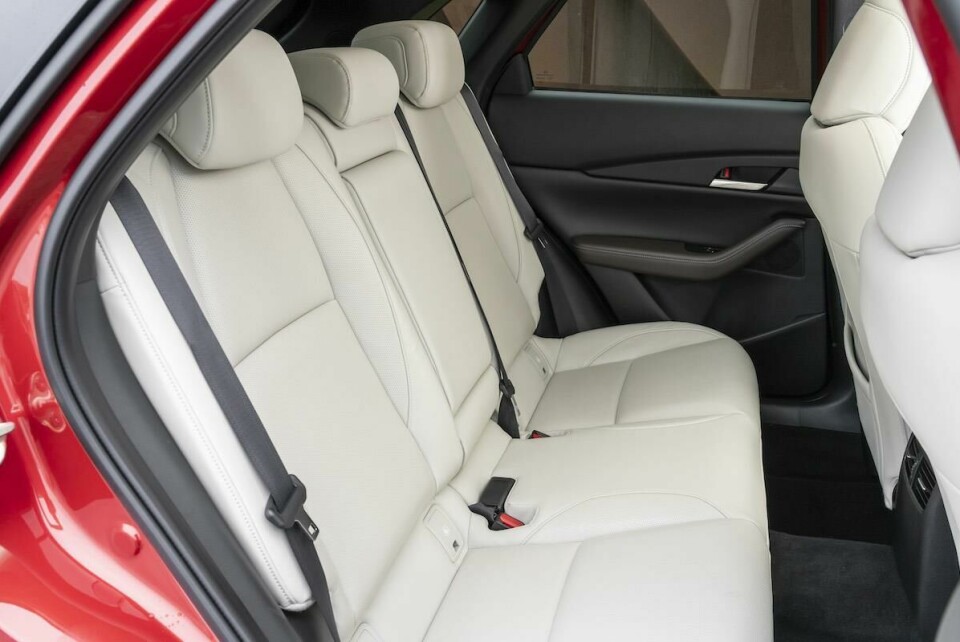
Driving and UX
And it certainly succeeded. Unlike other larger SUVs on the market, the CX-30 is at home when driving along narrow streets and parking in tight spaces. Its size and manoeuvrability means that even some of the smaller parallel parking spots aren’t really all that daunting.
Plus there’s a whole load of tech to help. Cameras and sensors are cleverly hidden on the outside to provide a 360 view when parking, with gridded graphics displaying on the central screen to guide the driver. Front and rear cross traffic alert is useful at junctions, and lane-keep assist ensures the car stays on the right side of the line.
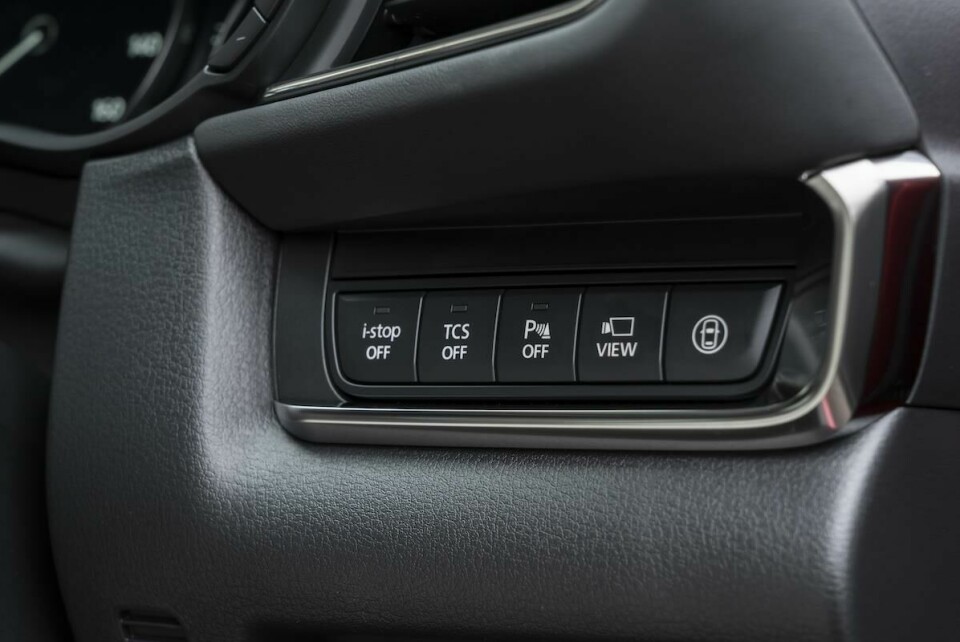
A radar at the front also enables advanced cruise control when on the motorway, as well as ’smart brake support’ for city driving – a system that has been designed to prevent low-speed bumps, but can be very sensitive, sometimes classifying stationary cars at the side of the road as a danger before automatically applying the brakes.
Like the 3, the CX-30 is available with Mazda’s new Skyactiv-X engine. The variant we tested came equipped with a 2.0-litre petrol providing 180ps, which seemed a little lifeless when accelerating hard. But the technology is designed to make the engine more efficient, saving the customer fuel and money. Over the course of a week, we averaged a little above the 43.5mpg stated by Mazda, clocking 45.5mpg – impressive by SUV standards.
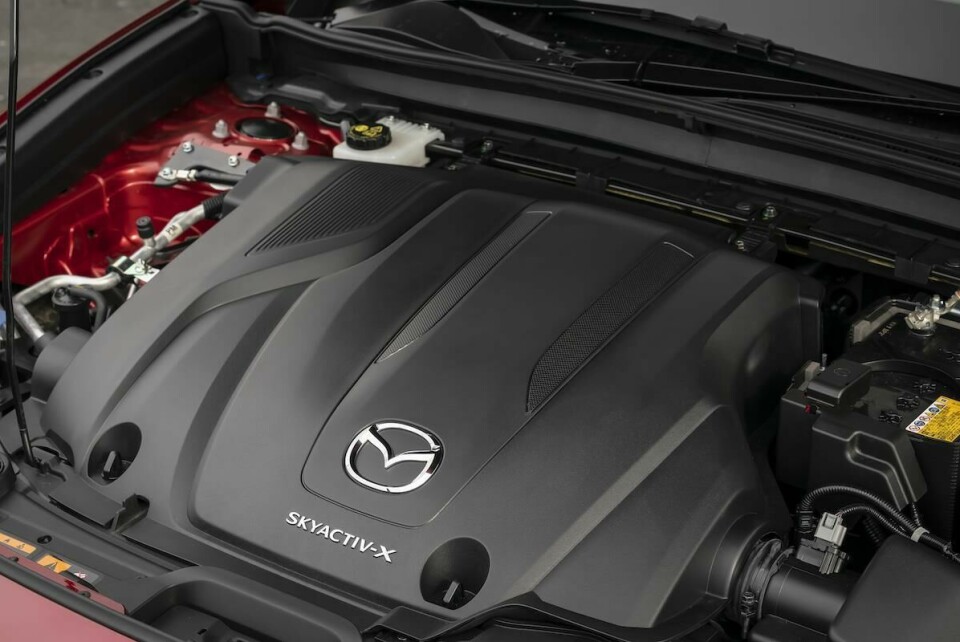
Summary
The term ’interesting design’ is not often used to describe an SUV. In fact, there are so many SUVs on the market void of exciting design detail, taking on the same old shape and forms, making it difficult to tell them apart.
But Mazda offers a change to the monotony with the CX-30. The relationship between light and the body work on the exterior is unique, and shows that a well-thought through, simple design can work wonders.
It might not be the best selling model, but the CX-30 deserves high praise. Mazda’s designers are at least attempting to take a new path, and as the ‘Kodo’ design language will continue to evolve, they will likely hit on more gems in the future.























